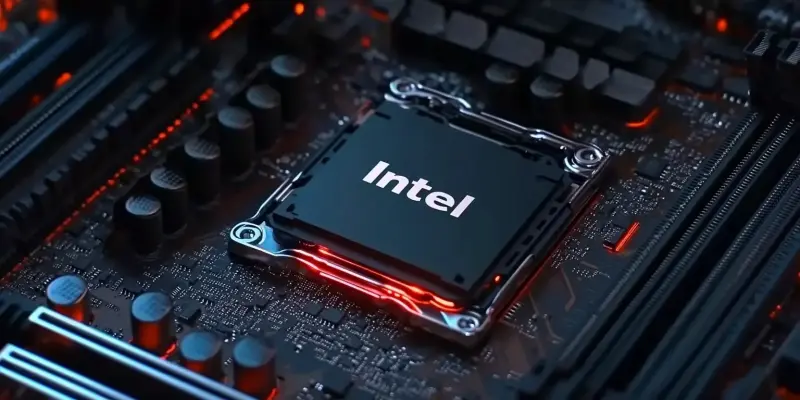Intel has introduced upgraded stock coolers for their non-overclockable Core Ultra 200-series desktop processors, a move that could potentially transform user experience with these CPUs. The introduction of the revamped Laminar coolers, namely the RH2 and RM2, marks a significant leap from their predecessors, with Intel promising substantial performance improvements and striking visual upgrades. With the demand for efficient cooling solutions ever-growing, these new coolers are set to make waves in the PC building community, appealing to those who favor both function and form.
Enhanced Performance and Design
The Laminar RH2 is bundled with the Core Ultra 9 285 processor and is a prime example of Intel’s commitment to improved cooling performance. Featuring a combination of an aluminum heatsink and a copper base plate, it is designed to enhance heat transfer efficiency. The RH2 is rated to handle chips up to 65W TDP and operates at a commendable noise level of just 2.2 bels. For the average user, this translates to “near-silent” operation, with the cooler running at an impressively quiet 23 decibels under load.
Furthermore, the RH2 includes integrated ARGB lighting, adding an aesthetically pleasing touch that is sure to appeal to those who care about the visual aspects of their build. These performance and visual upgrades represent a significant departure from older models, many of which were criticized for higher noise levels and less effective cooling. The inclusion of ARGB lighting is a particularly noteworthy enhancement, as it merges performance with style, catering to a broad demographic of PC enthusiasts.
User Experience and Practicality
For those looking at more budget-friendly options, the Laminar RM2 is paired with Core Ultra 5 processors like the 225, 235, and 265. While it might lack the ARGB lighting found in the RH2, it still offers a formidable cooling solution. The RM2 also benefits from the copper base plate upgrade, which significantly enhances heat dissipation capabilities. Though it operates at a noise level of 3.6 bels, it maintains a relatively quiet 30 decibels under load, which is quite impressive for a stock cooler.
Both the Laminar RH2 and RM2 are designed to operate within standard clock speeds and power limits, focusing on efficient heat management without the need for additional cooling solutions. However, it is important to note that for users interested in overclocking, Intel recommends turning to third-party air or liquid coolers for optimal performance. This suggests that while the new stock coolers are substantial improvements, they might not completely replace high-end cooling solutions in scenarios demanding more extreme performance.
Intel’s Broader Vision
Intel has launched upgraded stock coolers for their non-overclockable Core Ultra 200-series desktop processors, signaling a potential enhancement in user satisfaction with these CPUs. The new and improved Laminar coolers, specifically the RH2 and RM2 models, represent a considerable upgrade over their previous iterations. According to Intel, these coolers offer notable performance improvements and eye-catching visual enhancements.
The emphasis on efficient cooling is increasingly important as PC builders look for solutions that cater to both functionality and aesthetics. With these advancements, Intel is addressing the growing demand for adept cooling systems in the PC building community, directly responding to consumers who prioritize both performance and design in their setups.
These upgraded coolers are designed to offer superior thermal management, ensuring sustained performance even during demanding tasks. For PC enthusiasts who build or upgrade their systems, these new Laminar coolers from Intel are likely to be a welcome addition, marrying efficiency with style and helping to maintain optimal temperatures.

